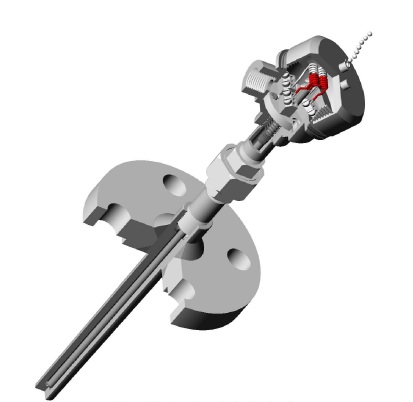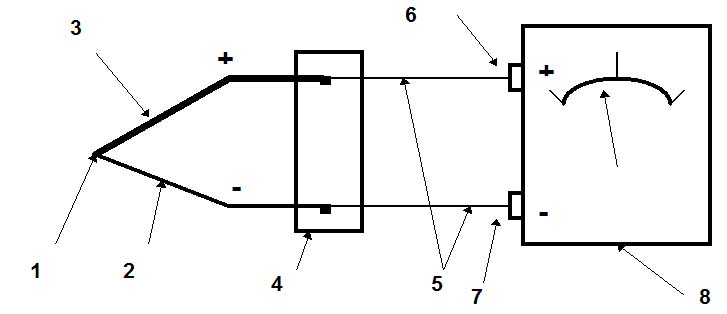Seebeck in 1821 discovered that thermal electromotive force (t.e.m.f.) is generated in a closed circuit of two wires made of dissimilar metals if two junction are at different temperatures.
One junction is inserted into a measuring media, and it is called a hot or measuring junction.
Another one, called a cold or reference junction, is kept either at 0 °C or at ambient temperature and is connected to a measuring instrument (millivoltmeter).

The electronic explanation of this phenomenon is as follows:
the density of conduction electrons in two dissimilar metals is different. So, in the case when metals are brought into contact (welded together), the free (or conduction) electrons will flow from the metal with high their density to the metal with low density of the conduction electrons.
As the result of this drift, a potential difference is produced in the boundary between these two metals. This potential difference will stop the flow of electrons.
Since the metals are different, so they will differently respond to temperature variations. In other words, the variation of temperature will change the density and velocities of free electrons in two metals differently.
This will cause the change in the magnitude of the thermal electromotive force.
Figure 1: schematically shows a thermocouple and a measuring instrument.
1 - hot junction; 2 - metal A; 3 - metal B;
4 - connection head; 5 - extension wires;
6, 7 - positive and negative terminals, respectively, of a measuring instrument;
8 - measuring instrument.
